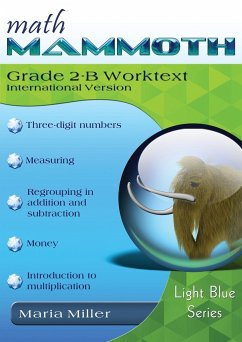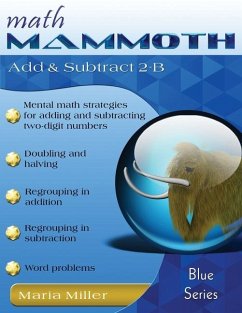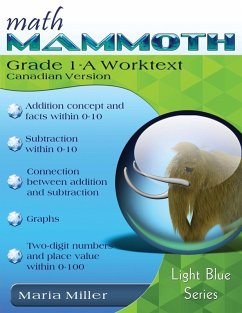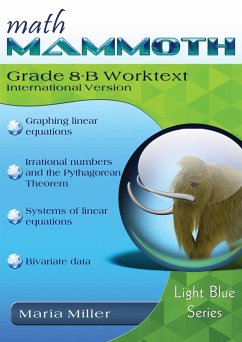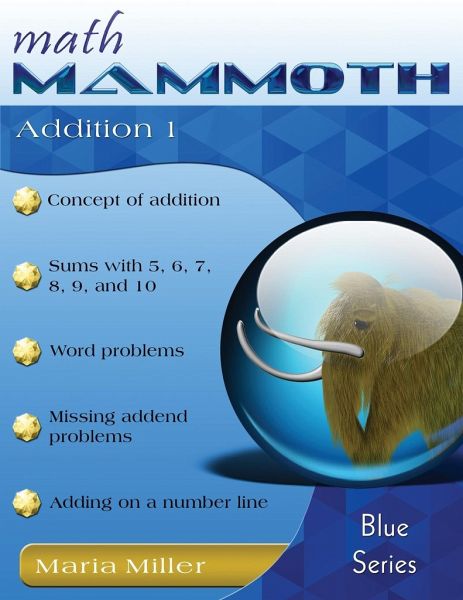
Math Mammoth Addition 1
Versandkostenfrei!
Versandfertig in 1-2 Wochen
17,99 €
inkl. MwSt.

PAYBACK Punkte
9 °P sammeln!
Math Mammoth Addition 1 is a worktext (includes both teaching and exercises), dealing with the concept of addition and addition facts within 0-10 (in few occasions numbers between 10 and 20 are used). The book is most suitable for first grade. The book starts out with very easy addition problems within 0-5, using pictures. If the student does not yet know the symbols + and = , you can introduce them first orally. In other words, use blocks or rocks and make addition problems where you use both kinds of wordings: "Three blocks and four blocks makes seven blocks. Three blocks PLUS four blocks EQ...
Math Mammoth Addition 1 is a worktext (includes both teaching and exercises), dealing with the concept of addition and addition facts within 0-10 (in few occasions numbers between 10 and 20 are used). The book is most suitable for first grade. The book starts out with very easy addition problems within 0-5, using pictures. If the student does not yet know the symbols + and = , you can introduce them first orally. In other words, use blocks or rocks and make addition problems where you use both kinds of wordings: "Three blocks and four blocks makes seven blocks. Three blocks PLUS four blocks EQUALS seven blocks." Play like that until the child can use the words PLUS and EQUALS in his/her own speech. This will make it easier for him/her to use the written symbols. Soon the lessons start including "missing addend" problems. We first use pictures, and gradually get to the abstract 1 + __ = 5 with symbols only. Keep in mind that children may confuse this problem with 1 + 5 = __. You can word these problems like this: "1 and how many more makes 5?" You can MODEL them by drawing: First draw 1 ball. Tell the child that we need to have a total of 5 balls. He is to draw more until there are five balls. In the missing addend problem, however many balls the child has to draw is the number that goes on the empty line. So, first there is one ball, then we need to add (draw) some more to make 5. But how many more were drawn? After that, the book contains many lessons called Sums with... whose goal is to help the child memorize addition facts. My approach to memorization is many-fold: Structured drill, such as you see in the lessons Sums with 5, Sums with 6, and so on. This is not random drill, because you will start it by showing the pattern or the structure in the facts. This will help the student to tie the addition facts in with a context and help him understand the facts more on a conceptual level, instead of merely memorizing them at random. In sums with 5, the child learns the number combinations that add up to 5: 0 & 5, 1 & 4, and 2 & 3. This understanding is the basis for the drills. Using addition facts in games, in math problems, everyday life, or anywhere else. Games are especially useful because they help children like mathematics. Random drilling may also be used as a tool among others. Memory helps such as silly mnemonics or writing math facts on a poster and hanging it on the wall. These are not needful for all children. However, keep in mind that children will need LOTS of opportunities to add numbers to actually memorize the facts, so the memorization may not totally occur as your child works through this book. These same addition facts are further studied and used in the Math Mammoth Subtraction 1 book, and in all later math work since they are constantly used. At the latest, your child should memorize addition facts during second grade.






